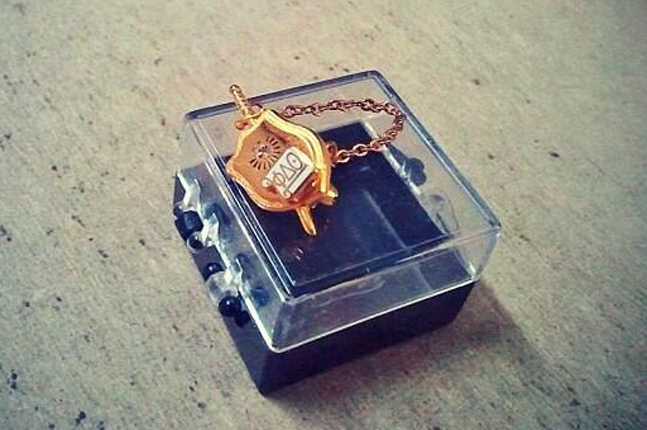By Evan Newman, Leadership Consultant
Phi Delta Theta’s 81st Biennial Convention is approaching and over 600 Phis will soon converge on Savannah, Georgia. Convention is not just a time for legislative action, but it is also a time for Phis to celebrate one another, our great Fraternity and our Bond as brothers. During the Convention season, brothers wear the badge of Phi Delta Theta with great pride and in tremendous unity. This year will be no different. Thus, Phi Delta Theta encourages all brothers to take a few short moments to learn a bit of history about the badge and the proper way to present it.
Listed in Article VII: 15 of The Code as Insignia, or a distinguished mark of membership in an organization, the badge is sacred to every brother of Phi Delta Theta and has been since the badge’s design in June of 1849. The original badge consisted of a flat gold shield with an eye affixed to the upper portion, suggested by Morrison, and a scroll fixed to the lower portion, suggested by Wilson. Morrison added that the Greek letters “ΦΔΘ” shall be inscribed somewhere on Wilson’s scroll. Though the badge was designed in 1849, it was worn only in secret until 1852, when Miami University President, William C. Anderson, an honorary brother, allowed the badge of Phi Delta Theta to be worn at a senior brotherhood celebration and then the senior graduation ceremony a few weeks later. This was the first time since 1841 that the University had shown any support of the Greek community.
Not until 1866 was a sword attached to the golden shield, at the installation of J.C. Black, a brother at the University of Chicago chapter. The addition of the sword to the badge was not official though until the Phi Delta Theta Convention of 1871. Prior to 1871, no description of the badge appeared in Phi Delta Theta’s Constitution. That year, the newly adopted Constitution provided that that badge should consist of a shield, bearing the eye and scroll, with a sword attached by a chain. At the time of its inception, Phi Delta Theta was the first fraternity with a sword incorporated in to its badge design. The badge, except for size and ornamentation, has not been changed since 1871.
A common misunderstanding among many Phis is to wear the badge on the lapel of their coats. Rather, the proper place for the badge of Phi Delta Theta to be worn is over the heart, directly on the dress shirt, rather than on the coat lapel. The Code provides that the badge shall not be worn except by initiated members of the Fraternity or their mothers, wives, daughters, sisters, or fiancées, and a penalty of one year’s suspension may imposed by a chapter on a member violating the clause.
Though the direct meaning and significance of the badge of Phi Delta Theta has never been disclosed to non-members, R.A.D. Wilbanks said it best in 1866, when he wrote to T.M. Paschal of Kentucky Alpha, the emblems of Phi Delta Theta “speak the mystic language of our fraternal union.”
Phi Delta Theta looks forward to joining together with brothers and their families in Savannah! Bring your badge!





